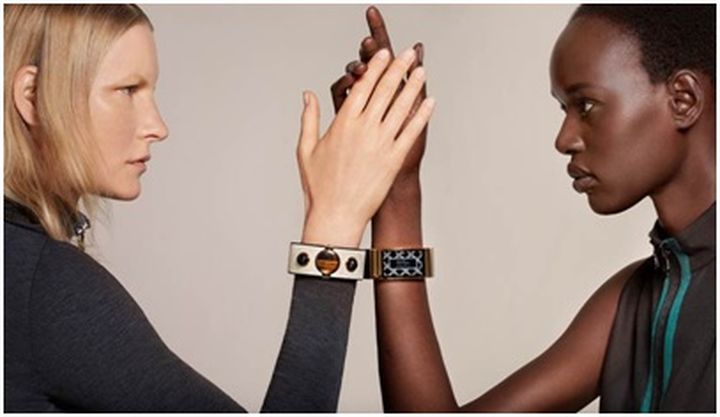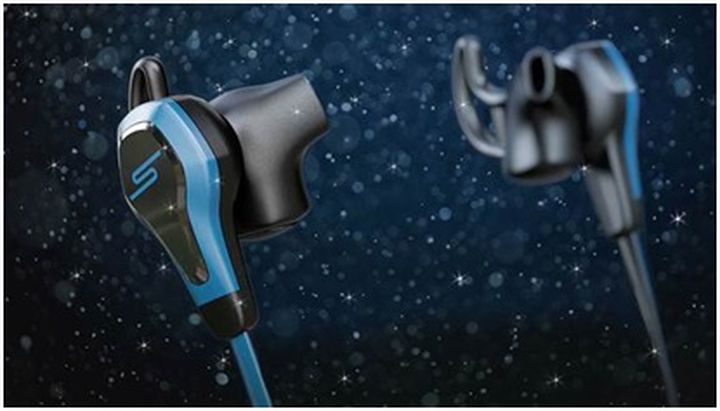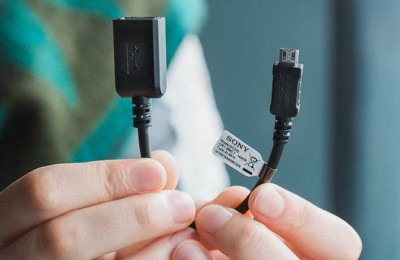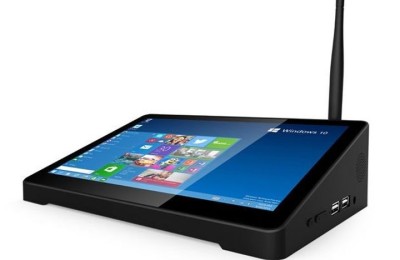Devices based on wearable technology, Internet of Things, for the sake of people’s lives. Analysis of “big data” in health care, waiver wire, “Smart” city
Devices based on wearable technologies are increasingly in demand among buyers as they become widespread. This trend is clearly reflected in the segment of digital solutions for sports and fitness: in 2014, according to a report Gartner, has sold 70 million devices to monitor parameters in such studies. In addition, according to Intel, in 2015 the market of “smart” watches also expects significant growth. In 2015, towards the realization of this concept will be taken a step further when manufacturers and design teams (including manufacturers of fashionable clothes, jewelry, sports goods and hours) mass will enter the market of portable technology, offering his vision of design and functionality. It is expected that future devices will combine a fashion accessory and technologically advanced solution. According to forecasts of Intel, it will revolutionize the market in 2015 and subsequent years.
Devices based wearable technology
Modern digital technology in a stylish appearance
Devices based on wearable technologies are increasingly in demand among buyers as they become widespread. This trend is clearly reflected in the segment of digital solutions for sports and fitness: in 2014, according to a report Gartner, has sold 70 million devices to monitor parameters in such studies. In addition, according to Intel, in 2015 the market of “smart” watches also expects significant growth.
The main obstacle to the popularization of this kind of products has been the lack of adequate adaptation to individual habits, tastes, needs. Devices of this type should be included in the daily lives of the owners unobtrusively, as they assume constant wearing, and in constant automatically provide the necessary information on key indicators of the physical state of the user. In addition, the “smart” gadgets based on wearable technology should provide a simple and easy exchange of data with other devices.
In 2015, towards the realization of this concept will be taken a step further when manufacturers and design teams (including manufacturers of fashionable clothes, jewelry, sports goods and hours) mass will enter the market of portable technology, offering his vision of design and functionality. It is expected that future devices will combine a fashion accessory and technologically advanced solution. According to forecasts of Intel, it will revolutionize the market in 2015 and subsequent years.
Facts
- In December 2014, Intel announced a partnership with Luxottica Group * – the world’s largest manufacturer of glasses. Intel and Luxottica * combine the expertise to introduce in 2015 a new wearable device.
- Intel, together with SMS Audio * created a “smart” headset for monitoring sports. It has a dual function: allows you to monitor the physical condition of the user and provides high-quality music playback.
- Intel announced the acquisition of Basis Science Inc., developer bracelet Basis Peak, which controls heart rate during sleep and exercise.
- First place in the contest Make it Wearable Intel Corporation in November 2014 awarded the project Nixie * – unmanned aerial vehicles equipped with a video camera. Control module is worn on the wrist and allows you to take photos and videos, including the owner and his friends.
- In November 2014, Intel introduced the MICA * – A fashion accessory for women with advanced communication capabilities. MICA * (My Intelligent Communications Accessory) designed and developed with the participation of the Opening Ceremony * – one of the most famous companies in the field of fashion. A device for communication, display text messages and e-mail notifications Google (Gmail) * and the social network Facebook *.
- Intel helps to speed up the evolution of wearable devices, empowering them to connect, offering more compact microprocessors and adding new social functions. Intel has 40 years of experience in making miniature in microelectronics and determines the direction of development of the IT industry in the future.
Comments
Neil Cox (NeilCox), head of the development of new markets in EMEA corporation Intel: We are at a very important stage in the development of wearable devices as digital technologies become stylish appearance. Our challenge is that to create attractive and stylish accessories that people want to buy and will be worn at all times. We need to create a custom solution, not just another device for computing.
Now the market has begun the hype; and I think that in 2015 we will see a truly innovative design. Handheld devices have great potential for a razlichnyhoblastyah, starting with sports and ending with the medicine. They can really help you in everyday life. Intel for many years, aims to develop a truly useful intelligent wearable devices that will go unnoticed in people’s lives.
Internet of Things
Expanding opportunities for connections and computing
Imagine that you have a meeting scheduled for Monday morning, has been postponed for 30 minutes. Your car warns that difficult to move on the usual route traffic to work. After analyzing these two circumstances, the navigation system offers instant detour with the postponed meeting. You arrive at the place in time.
This scenario is possible thanks to the “Internet of Things”. To obtain the claimed result will not only modern devices, but also systems that can exchange data and “understand” each other. In 2014, began to use “smart” devices in areas ranging from retail and automotive and finishing power. So, we are approaching the implementation of the “Internet of Things”. A recent study by Accenture * showed that by 2019 69% of people will have the house “smart” devices.
However, 87% of the systems do not have access to the Internet. Implementation of Connection – this is one of the biggest challenges that we have to solve in 2015, Intel has organized alliance Open Interconnect Consortium, as the quickest route to market for new development is the creation of standard specifications and the use of open source. If the representatives of the industry will be able to work together, then 2015 could be a turning point in the implementation of the Internet of Things.
Facts
- Intel, together with Verizon *, Cisco * and GE *, in 2014 founded the Open Interconnect Consortium to develop networking technologies.
- Intel has been actively involved in the project TEAM * (Tomorrow’s Elastic Adaptive Mobility) to create vehicles with enhanced networking capabilities. Using Intel® Galileo fee and chipset Intel® XMM ™ 7160, participants create solutions for intelligent network that will provide safety on the roads and be able to effectively control the congestion of highways.
- In December 2014, Intel announced the release of Intel® IoT Platform – basic solutions to unify and simplify connectivity and security of the Internet of Things.
- Intel offers products and solutions that accelerate the implementation of the concept of “Internet of Things”, including Intel® Edison – a computer the size of a postage stamp that focuses on Internet of Things and wearable devices.
- Intel supports community technology enthusiasts, offering Intel® Galileo and Edison to create innovative solutions. These communities play an important role in the development of user interfaces, controls and usage scenarios.
- In 2014, Intel opened 4 laboratories IoT Ignition Lab in Munich, Istanbul, Stockholm and Swindon. 2 more laboratories are under development. Designed for the “transformation through the development of opportunities to connect,” Laboratory supports the introduction of Internet technology stuff.
- Siemens * together with the Intel Software has developed a pilot version of the “smart” parking, which shows how the sensors installed in street lights, possible to determine the free parking space to users of the system can find, book and pay for parking as it approaches to the destination.
- Eurotech * Set the counter at the entrance to the toilets on the second terminal Heathrow Airport and Milan Malpensa airport. Counters collect data on the number of passengers using the service, and to alert personnel to the need of cleaning. This improves the efficiency of the cleaning process and analyze the possibility of better optimization of the space.
Comments
Christian Morales (ChristianMorales), vice president and general manager of Intel in the region EMEA: Thanks to technological developments implemented over the past few years, the concept of “Internet of Things” became a reality. Intel supports this trend. We reaffirmed their commitment in 2014, when the corporation became a founding member of Open Interconnect Consortium – an industry group that is working on combining tens of billions of “smart” devices. In collaboration with industry leaders, including BMW *, Audi *, Siemens * and Costa *, we develop intelligent solutions for the future. Our priority is to create more and more “smart” and secure solutions. This applies to all computer systems – from handheld devices to large data centers.
Rod O’Shea (RodO’Shea), Director of Internet of Things of Intel Corporation in the region EMEA: Internet of Things allows us to collect data from different sources and use this information to make better decisions that will enable companies to increase profitability and efficiency, allow “smart” cities to better manage the ever-increasing number of people, improve the quality of medical care, and even be able to protect rare animals. There is an analogy, according to which information – a new oil as oil, it should be cleaned to create additional value, as in the case of oil, you need to know where it can produce. In the case of the Internet, we can produce items throughout and extract data from them advantages in the form of money and higher quality of life.
For the sake of people’s lives. Analysis of “big data” in health care

“Big data” save lives
Imagine the opportunity to analyze the entire genome of one person per day and start individual treatment immediately. Advances in the field of data analysis, the day may soon come. And we will see significant steps in this direction in 2015
Initially viewed as something narrowly scientific, “big data” have now become a practical thing, which is able to save lives. To collect, manage and understand the meaning of a huge amount of patient data allows you to identify trends, which previously could not be imagined without the technological advances of recent years.
A growing number of medical institutions and professionals implementing new techniques, including the use of devices with advanced network capabilities for remote monitoring of patients at home. This not only increases the level of patient satisfaction, but produces data sources for analysis broader trends which might lead to new discoveries in medicine.
Take the example described above: today on the analysis of the genome of one person can take up to a month. The challenge Intel, in collaboration with ecosystem partners and developers is to make sure that by 2020, these operations were carried out in one day.
This is a difficult task, but thanks to intelligence data, we hope to make significant progress in this direction in the coming year. In 2015, we will work with industry partners to operationalize the concept by transforming the latest innovations into practical solutions for medical institutions.
Facts
- Intel is working with Michael J Fox Foundation * to improve the monitoring of the status and treatment of people with Parkinson’s syndrome with today’s technology.
- Intel Capital has invested in Basis Science * – developer of innovative health monitoring devices.
- Using one of the most powerful supercomputers in the world, based at the family of processors Intel® Xeon® E5, experts set out to provide tailored medical care on the basis of a complete analysis of the human genome.
Comments
Eric Dishman (EricDishman), honored researcher and director of Intel Health Strategy & Solutions Group: Analysis of “big data” has the potential to significantly improve the health care system. Information obtained in the analysis of the genome during diagnosis from medical systems and handheld devices, can help create new methods of treatment and may prevent a number of diseases.
In 2015, we expect to reduce the time required for the analysis of the human genome. There will be new technology of data analysis, which will provide a high level of scalability for joint processing “big data” person. We hope that the industry partners will offer new design for clinics and research centers.
Bernadette Andrietta (BernadetteAndrietti), vice president of Intel Sales and Marketing Group, Marketing Director in the region EMEA: At a time when high computer calculations begin to penetrate into the sector of medicine, 2015 will be a year of new technological breakthroughs; Intel is developing technology that will give researchers the resources necessary to deal with complex diseases and deadly diseases.
Waiver wire
Imagine charging a smartphone or laptop wirelessly, connect the dock and monitors without wires. It will soon become a reality. Kirk Skaugen (Kirk Skaugen), Head of PC Client Group Corporation Intel, announced at IDF 2014 that Intel plans to introduce “Wireless PC” in 2015
According to a report by IHS *, the global market solutions for the wireless transmission of electricity will increase by 2019 to 140%. IHS * also predicts that the volume of global revenues in this market will be $ 2.5 billion. Wireless technology offers users the freedom to move, the convenience and flexibility of using digital devices at work and at home for as manufacturers switch to production systems without wires.
Intel is involved in the development of solutions that allows many devices to charge simultaneously. This technology will revolutionize computer calculations. In the future, offices, hotels and airlines will operate differently.
Facts
- Intel participates in the Alliance for Wireless Power (A4WP) – an independent non-profit organization whose main purpose is to create a wireless ecosystem.
- In June 2014, Intel announced the licensing of wireless technologies together with WiTricity *, a member of the A4WP.
- Intel introduced the innovative wireless prototype Charging Bowl as part of Intel Future Showcase 2014. Created to meet the needs of consumers, the device allows users to quickly and easily to charge their devices wirelessly.
- 14-nanometer Intel Core processors 5th generation, which will be introduced to the market in 2015, will provide high performance and long operating time without recharging devices.
- Intel is currently developing a new microarchitecture for a 14-nanometer process technology (codenamed Skylake), details of which were announced as part of IDF 2014. It is expected that the release of the new development will begin in the 2nd half of 2015 based platforms Skylake change the perception of mobile computing computing tablet device format 2-in-1 and laptops.
- Skylake make wireless connectivity and charging a reality, allowing to abandon the use of wires at work and at home.
Comments
Kirk Skaugen (KirkSkaugen), senior vice president and head of Intel PC Client Group: Wireless technologies are at the final stage of development, and in 2015 will begin their practical use. Skylake designing and Charging Bowl, Intel is focused on developing solutions that are “free” users from wires. We strive to create innovative solutions and we believe that computing devices without wires will become a new stage in the development of computer technology. Our participation in the Alliance for Wireless Power will allow us to take a leading position in this field.
Hermann Eul (HermannEul), Vice-President and Head of Mobile and Communications Group Corporation Intel: We will reach a point where the LTE network will be faster than any home network. When you are able to guarantee high-speed wireless data anywhere, before you open up new possibilities. And this trend is observed throughout the world, not only in developed economies.
Peter Glyaysner (PeterGleissner), vice president of Intel, director of sales and marketing in the EU: A more secure and user-friendly interfaces will become the main trend. You will be able to take advantage of new capabilities of devices based on Intel, including an intuitive interface, voice control, retinal scan, perceptual computing and wireless charging. All these innovations will help to make our lives better.
Mike Bell (MikeBell), Vice prezidentIntel and head of New Devices Group: In 2015, we will observe a special interest in wireless charging technology, especially in the segment of portable devices. Manufacturers begin production of products that will not have a large connectors, and users will appreciate the ability of wireless charging. “
“Smart” city
According to a study by the World Health Organization (WHO), more than half the world’s population – about 4 billion. – Lives in cities. And in the next 35 years, their share will increase to 66%. Such high growth rates cause problems on the way to ensuring that the city more attractive to stay.
Internet of Things provides valuable information to help you cope with this kind of difficulties. For example, monitoring tools diversion of water resources allows city residents to plan ways to move, improve air quality, etc. The application of this information are extensive and are limited only by political and economic barriers.
From a technical point of view, “smart” cities are a variety of devices with support for the concept of “Internet of Things”, including street lights, equipped with sensors. They collect data is then transformed into information. All the necessary technologies are already available, so 2015 will be a year of practical implementation of such decisions. Besides devices “smart” cities will use collective data residents applying for this distribution networks and applications.
In previous years, has implemented a number of pilot projects, and in 2015 will start its mass use. Individual systems will be connected to each other. Similarly, the data source was previously used for only one purpose. The main task in 2015 will be how to make the data sources were more widely used.
Facts
- In July 2014 Intel organized Open Interconnect Consortium to ensure an open approach to the “Internet of Things” with the participation of leading industry players.
- In April 2014, Dublin was the first “smart” city in the world, established on the basis of technologies Intel.
- Intel technology used in Smart Parking System * Company Siemens *, which regulates vehicular traffic to create additional parking spaces.
Comments
Duncan Wilson (DuncanWilson), director of the ICRI Cities of Intel Corporation in the region EMEA: City planners through technology can create a “living laboratory” for evaluating the effectiveness of existing initiatives. In Europe, special attention is given to how to use modern technology to make life better in urban areas. The use of monitoring stations to monitor air pollution is very expensive. That is why their number is quite limited. In distributed networks, in which different devices can be used as sensors, costs are significantly reduced, which allows the station to the large number of places, including secondary roads or school grounds. This will allow the city authorities to better manage urban traffic control and air quality.
Our urban infrastructure controls itself. We get a large amount of data that quantitatively measure our work in the city. We have also begun to establish public data banks, which are small and medium-sized businesses can use to offer new services. However, we are experiencing a shortage of certain types of data. We are trying to find ways to motivate building owners more actively exchange information available to them to ensure that the benefits could be obtained as local companies, as well as the community at large.
Genevieve Bell (GenevieveBell), Head of User Experience Research Corporation Intel: In the near future we will be able to observe the active development of “smart” cities. Companies will have to pay attention not only to questions of profitability, but also consider the interests of residents. It will be necessary to control the everyday processes and optimize them for the benefit of everyone who works and lives in cities.
Read another very interesting article about alternative energy of the Sun, water and air.





